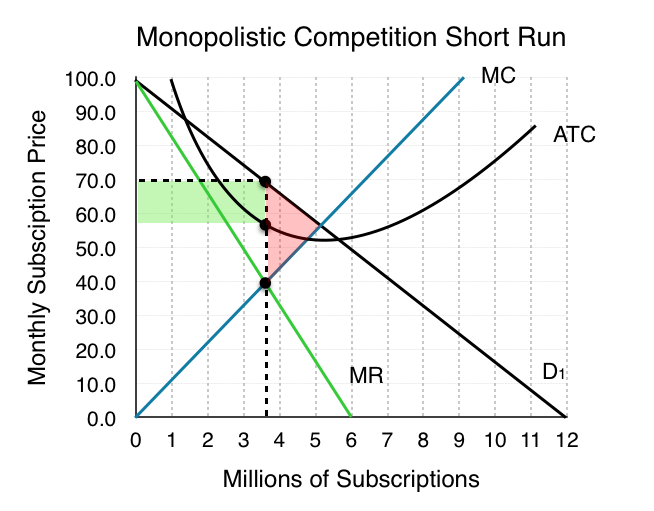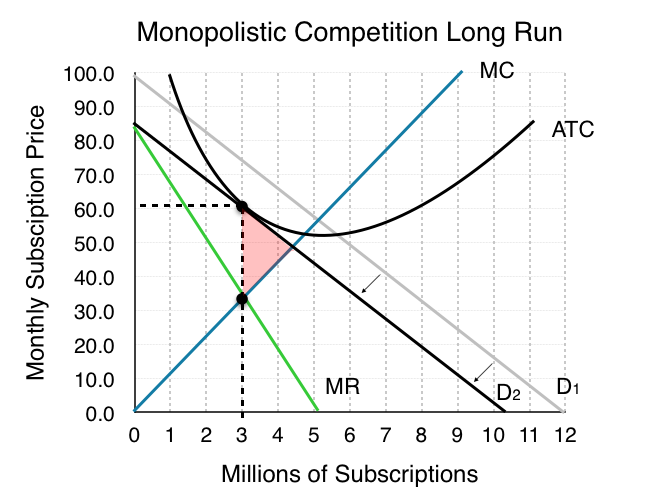10.5 Monopolistic Competitors and Entry
Consider the profits of Rogers at equilibrium quantity of 3.6 million subscribers.

At a price of $70/month, ATC is only $60 and Rogers’ profit is $36 million. ($10 profit/subscriber) Notice that this market creates a deadweight loss equal to the red area since the equilibrium quantity is less than what would occur in competitive equilibrium (5 million subscriptions).
Remember that in monopolistic competition, there are few barriers to entry. Since Rogers is earning positive economic profits, other firms will be tempted to enter the market.
The entry of other firms into the same general market shifts the demand curve faced by a monopolistically competitive firm. As more firms enter the market, the quantity demanded at a given price for any particular firm will decline, and the firm’s perceived demand curve will shift to the left. As a firm’s perceived demand curve shifts to the left, its marginal revenue curve will also shift to the left. The shift in marginal revenue will change the profit-maximizing quantity that the firm chooses to produce since marginal revenue will then equal marginal cost at a lower quantity.

Long Run Equilibrium in Monopolistic Competition
When will this shifting stop? When profits are 0. As long as P > ATC firms will continue to enter the market, and demand will continue to shift inward. As shown in Fig 10.5, this occurs when P = ATC and MR = MC. This specific point happens when Demand is tangent to ATC, because only when this is true can P = ATC, given that ATC is downward sloping (recall that the MC curve passes through ATC at the minimum point of ATC, and note that the minimum point of ATC is at a quantity higher than that produced by the monopolistically competitive firm). In the long run, the firms end up making zero economic profits. This is called the long run equilibrium.
What about the social surplus? Although profits are now 0, a deadweight loss persists. This is because, unlike perfect competition, P > MR, which also means that P > MC. Since consumers’ willingness to pay is greater that the marginal cost of the firm, market failure continues. Remember that a key reason for this is the firms’ inability to charge more that one price. Notice also that ATC is not at a minimum. This is the price the market pays for variety since the aggregate market does not ensure the most efficient production when there is slight differentiation in products. The existence of mark up and excess capacity ensures monopolistic competition is inefficient.
Attribution
“8.4 Monopolistic Competition” in Principles of Microeconomics by Dr. Emma Hutchinson, University of Victoria is licensed under a Creative Commons Attribution 4.0 International License, except where otherwise noted.

